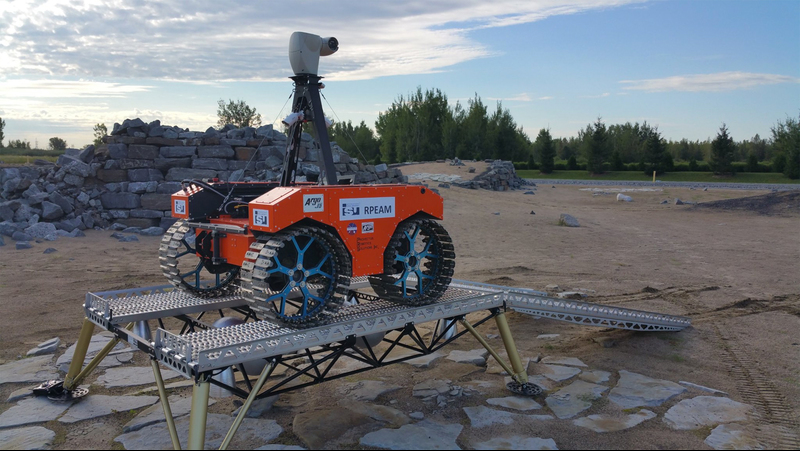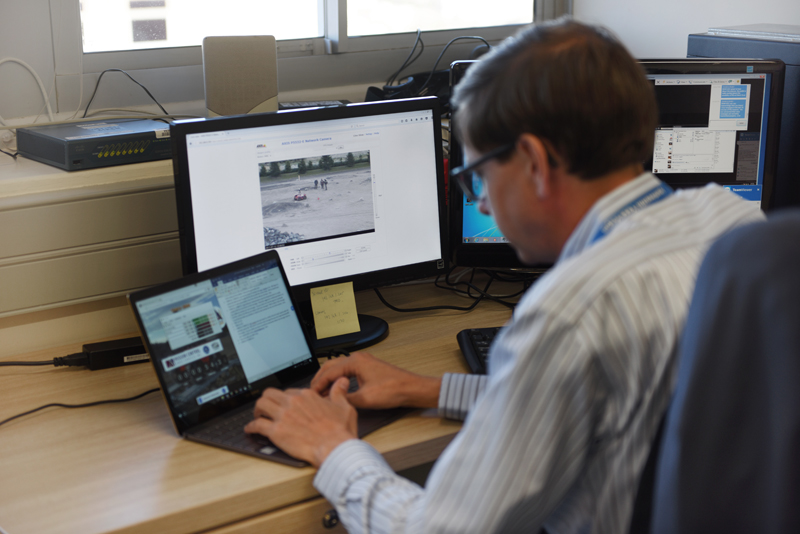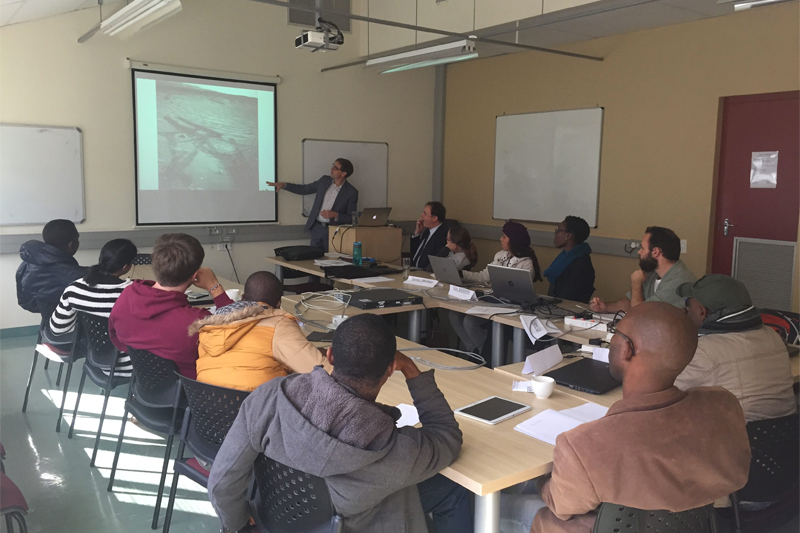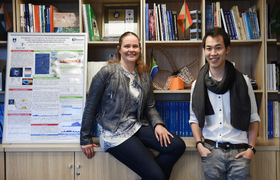Dust storm Mars rover mission
15 August 2017 | Story Yusuf Omar.
“SPAM One is experiencing major telecommunications problems. We’re not sure if they realise it yet.”
Ewan Reid was talking through a microphone. The situation seemed urgent, but Reid was the picture of calm. We were sitting in a makeshift ground control centre in Professor Peter Martinez’s office in the Menzies building, with panoramic views of False Bay, if not the heavens.
Reid is president and CEO of Mission Control Space Services Inc. Before founding the company, he was a lead designer on three rover prototypes for the Canadian Space Agency and was mission controller for nine of NASA’s shuttle missions.
Mission Control has been touring select universities around the world, giving students the chance to pilot the rovers and acting as a dry run for Mission Control’s actual outer space explorations. It’s an arrangement that benefits both the universities and the company.
After meeting Martinez at a conference last year, they decided to bring one of the tests to UCT. The ‘astronauts’, Martinez’s cohort of space science master’s students, were in a makeshift spacecraft – a locked seminar room in the SpaceLab on the seventh floor of Menzies. Their spacecraft was orbiting Mars while the rover rumbled along a Mars-like terrain at the Canadian Space Agency outside Montreal.
The mission: Find a safe spot to land on the red planet.
It was almost deathly quiet in the ground control centre, or GCC, as the mission controllers dubbed it. Reid was in constant contact with the astronauts and with a scientific team at the testing site in Montreal. There’d be silences lasting minutes, and Reid had to be ready to catch fleeting messages when they buzzed through his speakers.
But the astronauts did not notice that their speakers had stopped working. They missed messages from the GCC for well over a third of the three-hour mission.

How do you drive the Mars rover?
This is, no doubt, the question on all your minds. The answer is: with an Xbox controller.
At least that’s how UCT student Samuel Anih drove it. Anih was the pilot in the six-strong corps of astronauts.
In the spacecraft, Anih and company were laser-like in their focus. They’d each been assigned a role: driver, navigator, commander, sensors, science and communications. The name: Space Pioneers Analysing Mars, or SPAM.
Maureen Tanner was in charge of the communications desk. While the team’s bread and butter was spamming ground control with instant text messages, they’d occasionally send an urgent voice message, too. It would take eight minutes for a message from a spacecraft orbiting Mars to reach Earth, so Reid only acknowledged and reacted to their messages eight minutes after the fact, by which time the game might have changed. This was in the spirit of being as authentic as possible.
“It’s actually quite tricky to communicate with the eight-minute delay,” Tanner laughed a laugh that was as much an outpouring of adrenaline as it was mirth, minutes after the mission ended. “And then the speaker’s not working …”
Fortunately, the speakers were only to be used in emergencies, and Reid, Martinez and Professor Rene Laufer were impressed that the UCT astronauts eventually noticed and fixed the problem, all the while continuing their mission.
Unpredictable planets
The speaker mishap was one of a few bumps in the rover team’s path.
One that GCC was particularly looking forward to was a dust storm that they and the Montreal team would inflict on SPAM, to see how they dealt with this inevitable feature of life on desert-like Mars.
“GCC to SPAM One. A dust storm is approaching you at 300km/h and 20km to your east.”
Some teams get 20 minutes to plan for the storm. But no good deed goes unpunished. Because SPAM was doing well and had already assessed their two main landing sites, Reid decided to challenge them.
“GCC to SPAM One. A dust storm is approaching you at 300 km/h and 20 km to your east.”
In simple English: you have less than five minutes to get out of there.
Cue uproar in the spacecraft, with exasperated arms evident over a CCTV Skype link.
It wasn’t enough time for the sluggish rover, and ground control cackled slightly as SPAM’s front cameras dimmed – a consequence of them bearing the brunt of the onslaught. But both cameras then went out completely, and suddenly the team had to feel their way around the last minutes of the mission purely by LIDAR, a form of LASER based radar.
“That’s the interesting thing about this kind of simulation,” said Reid afterwards. Mission Control caused the ‘storm’, but the camera failure was unplanned and unexpected. The astronauts also erred at first by gathering samples of air because the rover’s arm was too far from the soil.
SPAM had been using a laptop which had a mission timer program loaded, but the laptop randomly crashed and the team couldn’t get it back online. That wasn’t planned either.
“It just happened. And you’ve got to deal with it. There are some simulated failures and some real failures, and all of them go together to make a fairly realistic mission, in that sense.”

The space pioneers were given feedback on what went right and what went wrong – all valuable learning for Reid as his company hones their product.
In the end, the astronauts found two possible landing spots, and their mission was accomplished.
In part, they owed the success to meticulously planning every movement of their three-hour mission, but Reid also lauded their flexibility, which is critical in unpredictable environments, not least when said environments are on different planets.
“If you see a little Martian man walking over here” – Reid pointed to his right – “you’re going to stop and look at that!”
 This work is licensed under a Creative Commons Attribution-NoDerivatives 4.0 International License.
This work is licensed under a Creative Commons Attribution-NoDerivatives 4.0 International License.
Please view the republishing articles page for more information.










